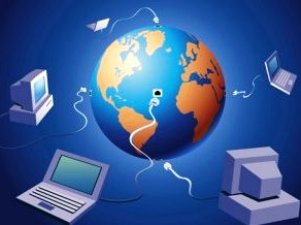By Aditya Dash*
You can read this because you know English. Imagine the internet content available for people who cannot read English? What if you can read only Oriya?
The scope for accessing the vast ocean of knowledge on the internet is severely limited for those who do not know English. This is a very fundamental barrier and a very prominent but overlooked wall that makes up the ‘digital divide’. We have the government and private sector focusing on infrastructure hurdles such as fibre optic cables and internet connection through 4G networks. We have manufactures of laptops, cell phones and tablets, who will ensure that such devices are made available at a very low cost to consumers. But is the Odisha market worth their trouble? Is it something that market forces can deliver?
 Going by the 2011 census, the literacy rate of Odisha is 73.45 per cent (82.4% male, 64.36% female). Out of the literate population, the percentage of people who can read and write English must be much lower.
Going by the 2011 census, the literacy rate of Odisha is 73.45 per cent (82.4% male, 64.36% female). Out of the literate population, the percentage of people who can read and write English must be much lower.
As the premier regional party, BJD should take the lead in making Oriya content available on the internet. The BJP can also do its bit and boost its prospects in the state in the process.
Let us acknowledge the fact that digital divide is not simply about lack of fiber optic cables in every Panchayat. Language is the real high wall that is denying the fruits of the internet to the majority of the Oriya population.
The Department of Tourism & Culture should collaborate with Department of Information Technology to launch new schemes. One of the areas they could focus on is translating relevant information in Oriya. The scope is immense, but some focus is needed.
 The Food and Agricultural Organization (FAO) has a huge list of manuals for farming, horticulture, animal husbandry and fisheries all available in English. Translating these into Oriya would be a cost effective way of disseminating valuable information to those who need it the most.
The Food and Agricultural Organization (FAO) has a huge list of manuals for farming, horticulture, animal husbandry and fisheries all available in English. Translating these into Oriya would be a cost effective way of disseminating valuable information to those who need it the most.
Another area where the state government can play a proactive role is by collaborating with popular software companies such as Microsoft, Google and Mozilla and launch an Oriya version of their software.
While we wait and hope for the government machinery to act on such suggestions, there is plenty of scope for the private citizen to join this campaign. One can have an awareness session amongst prominent media organizations of Odisha for adopting a uniform (unicode) Oriya script for their websites. The unicode Oriya script is something like the universal Oriya script. However, it will be useful only if people start using it. This is especially the case with the print industry, which continues to use non-Unicode Oriya fonts for typing. Hopefully, a prominent media organization can lead by example.
The information revolution has made the world flat. Now we have a chance to contribute to society by simply creating content on Oriya Wikipedia or even English Wikipedia for that matter.
Oriya Wikipedia could use a lot of volunteers. It currently has around 50 active contributors.

Wikipedia is the online open source encyclopedia for those who do not know and want to find out about something. Contrary to popular perception, it is not a place where anyone can simply post and edit information. Citation rules are strictly enforced and voluntary editors ensure that the content is very accurate. Oriya Wikipedia hasn’t got the mainstream attention that it deserves. Maybe young politicians and bureaucrats can motivate society and raise awareness about this noble initiative.
Educational institutions such Schools and Universities can also contribute towards this project since a valid Wikipedia entry has tremendous educational values. It enhances writing, research and citation skills.
Other open source projects are also possible. There are simple ones such as identifying and writing about prominent tourist spots on popular apps like Google Maps, Wikimapia and Trip Advisor.
Other more ambitious open source projects could include translating the huge collection of manuscripts available with the Odisha State museum.
The museum will be (again don’t really know how long they will take) making the manuscripts available online with the help of the National Informatics Centre (NIC). During my visit to the manuscript preservation lab, I learnt that existing readers of Oriya language can easily learn and decipher the ancient palm leaf manuscripts (you do not need any formal training for it). So join in and spread knowledge, appreciate the power of knowledge.
Accessibility of knowledge is the great equalizer in society.
Let us spread it.
………………………………………………………..
*Aditya Dash is the vice president of the Seafood Exporters Association of India (Odisha region). He may be contacted at [email protected]


Comments are closed.